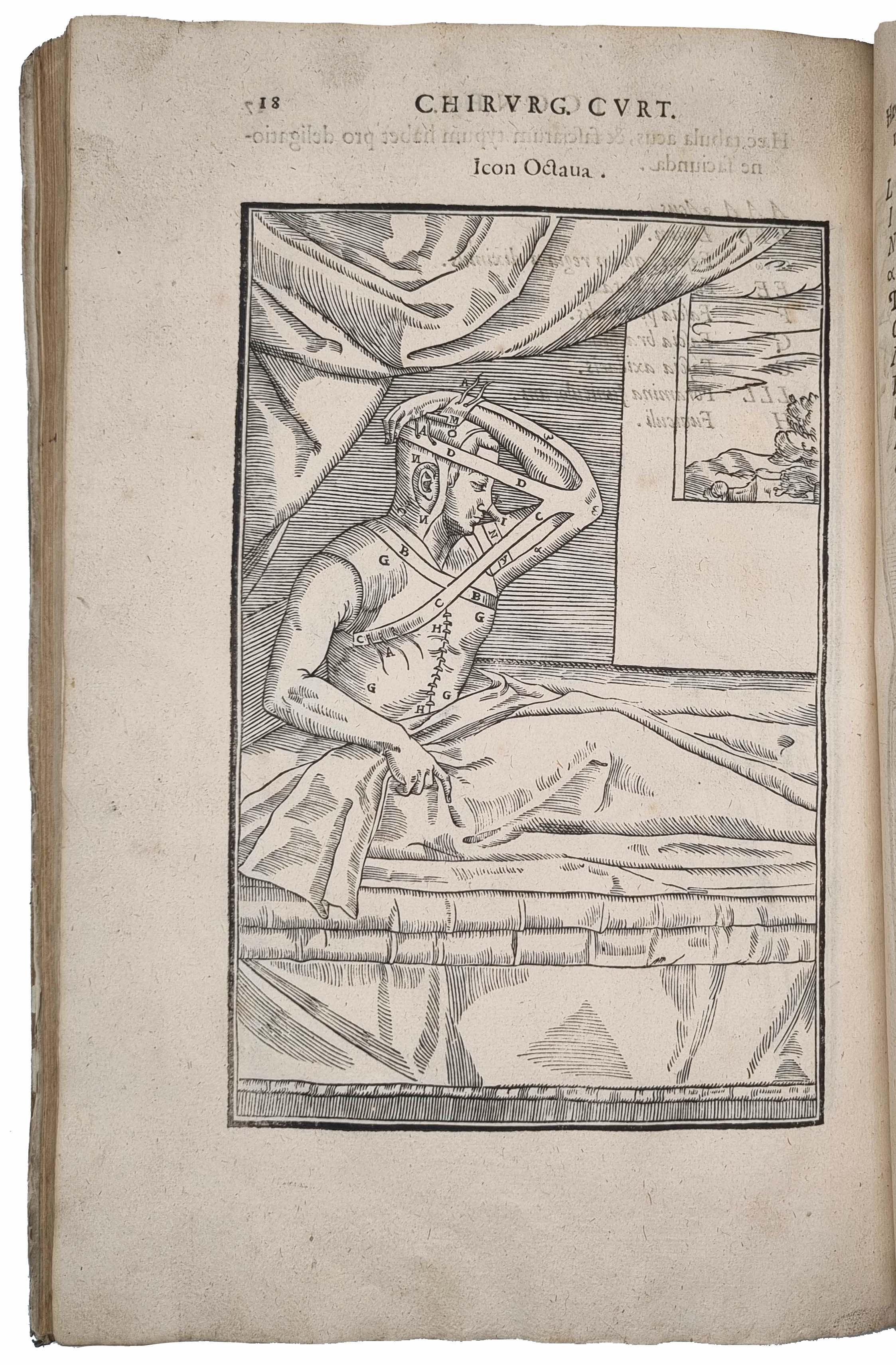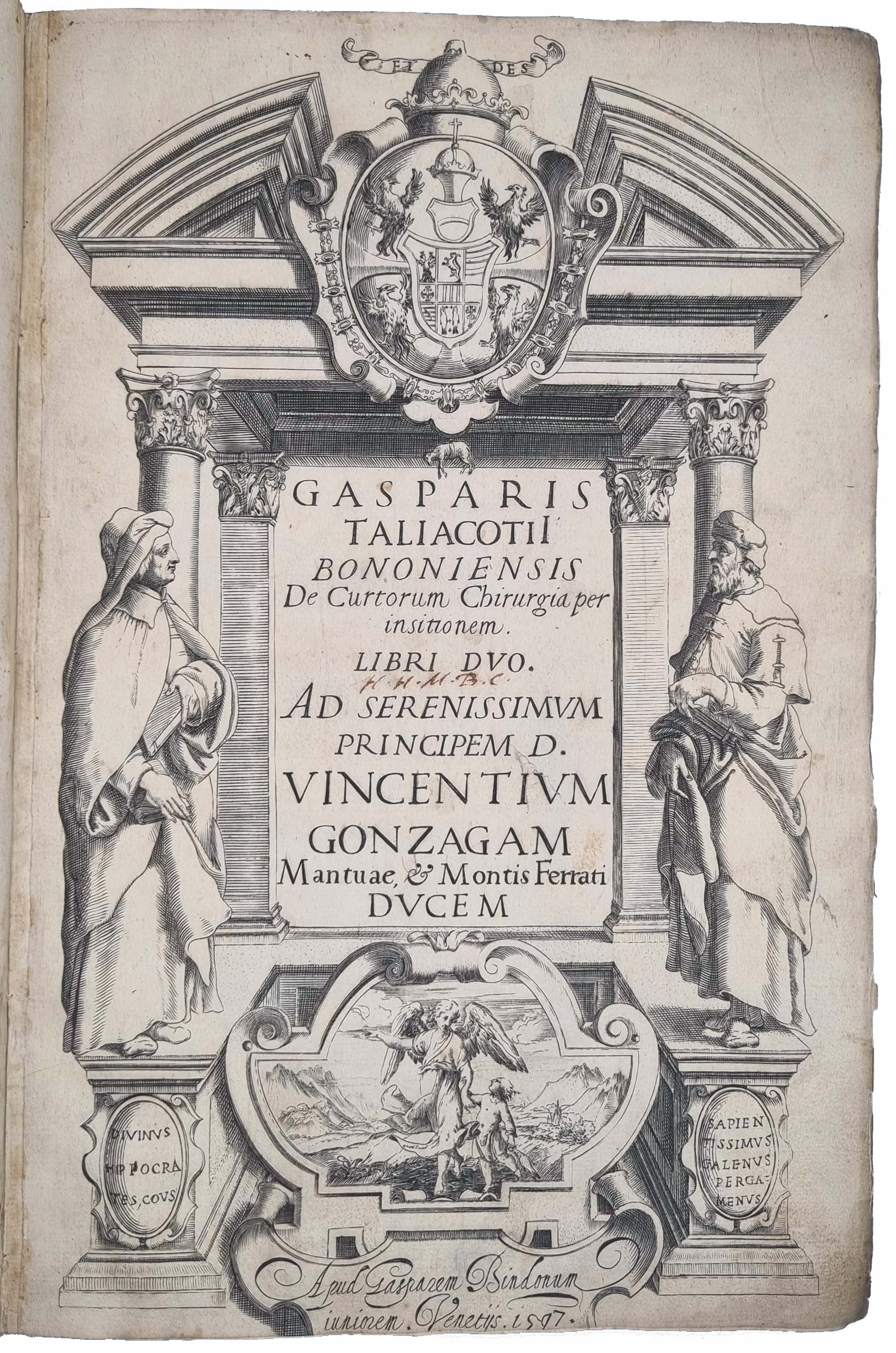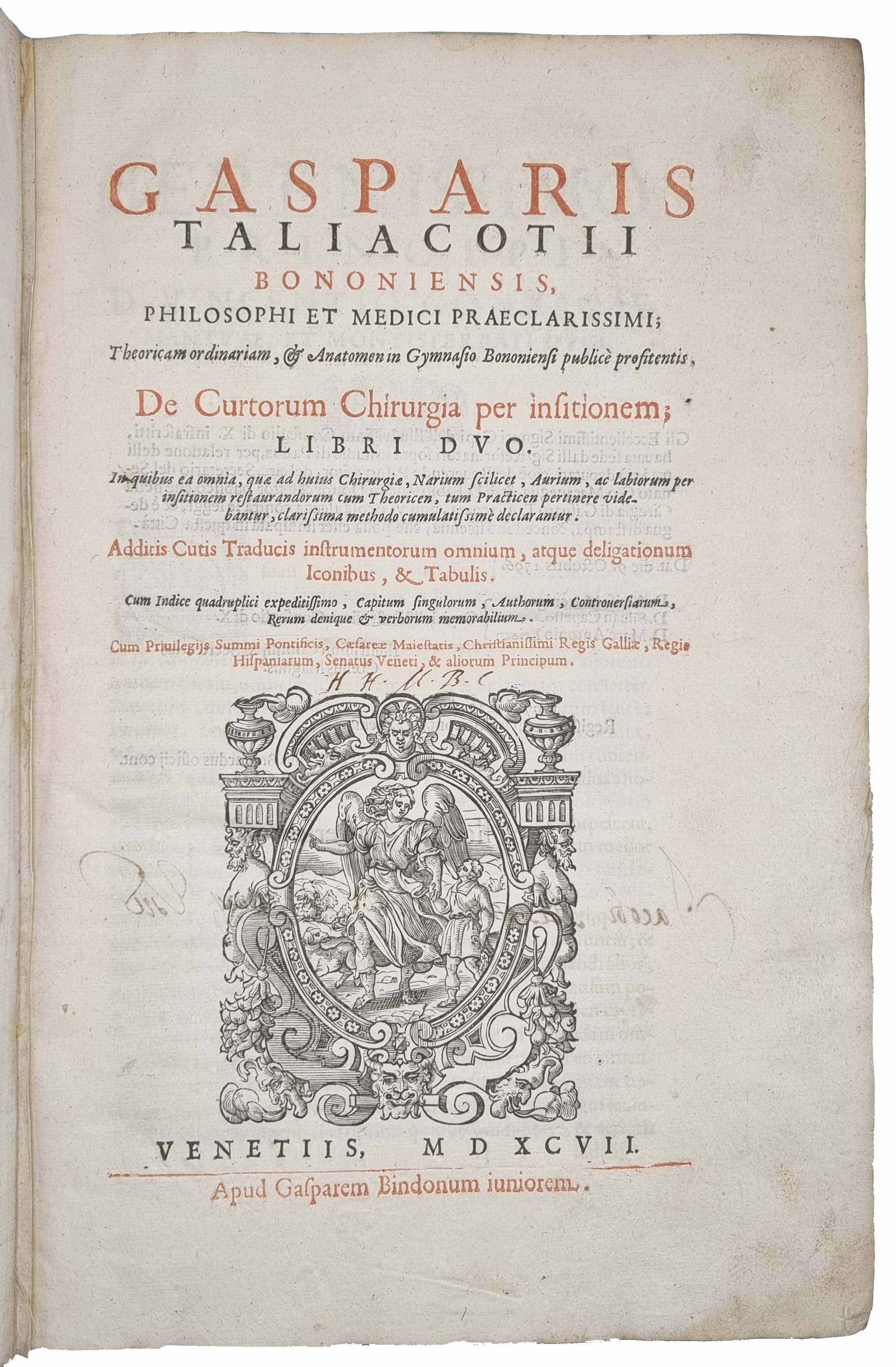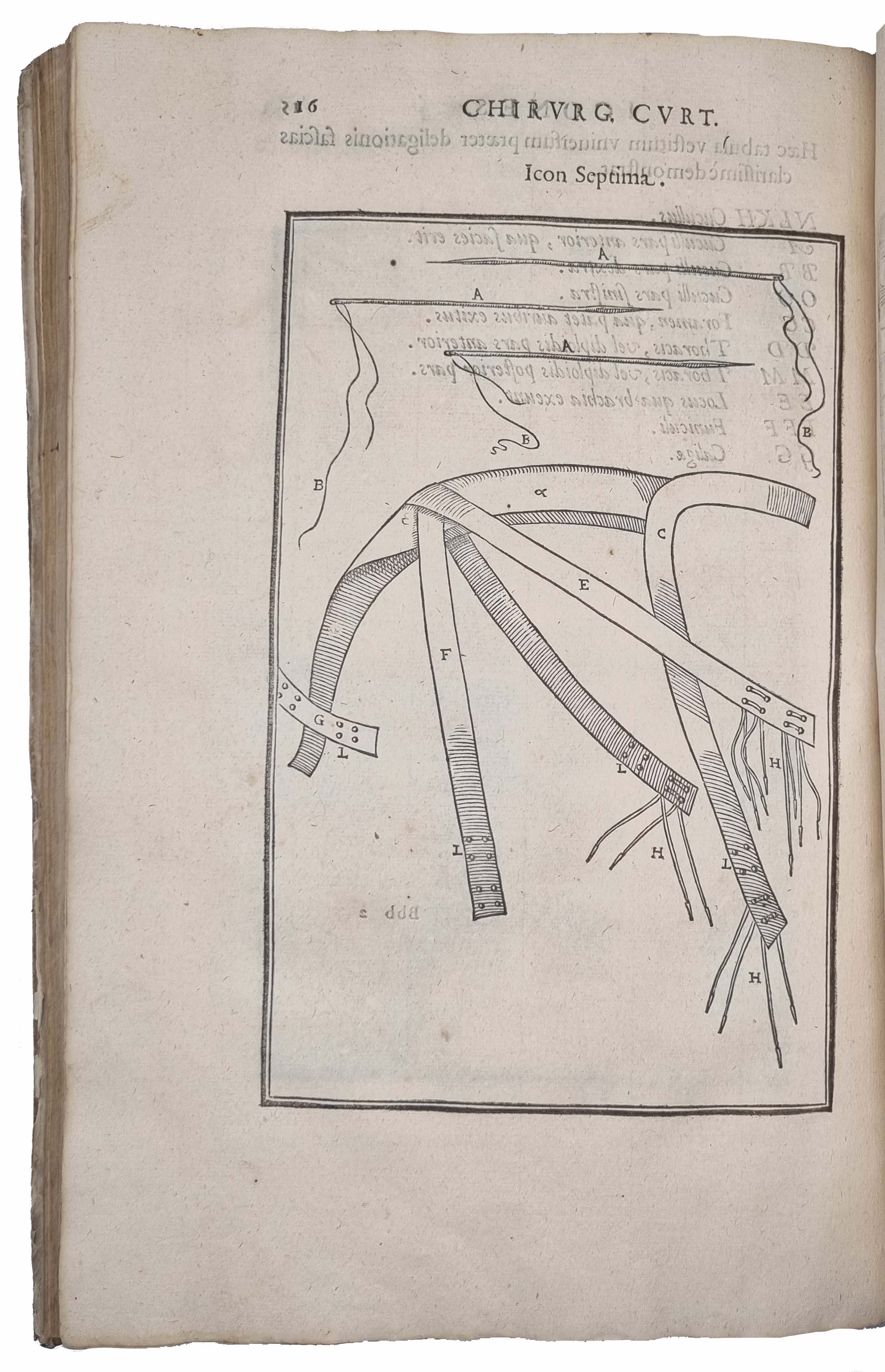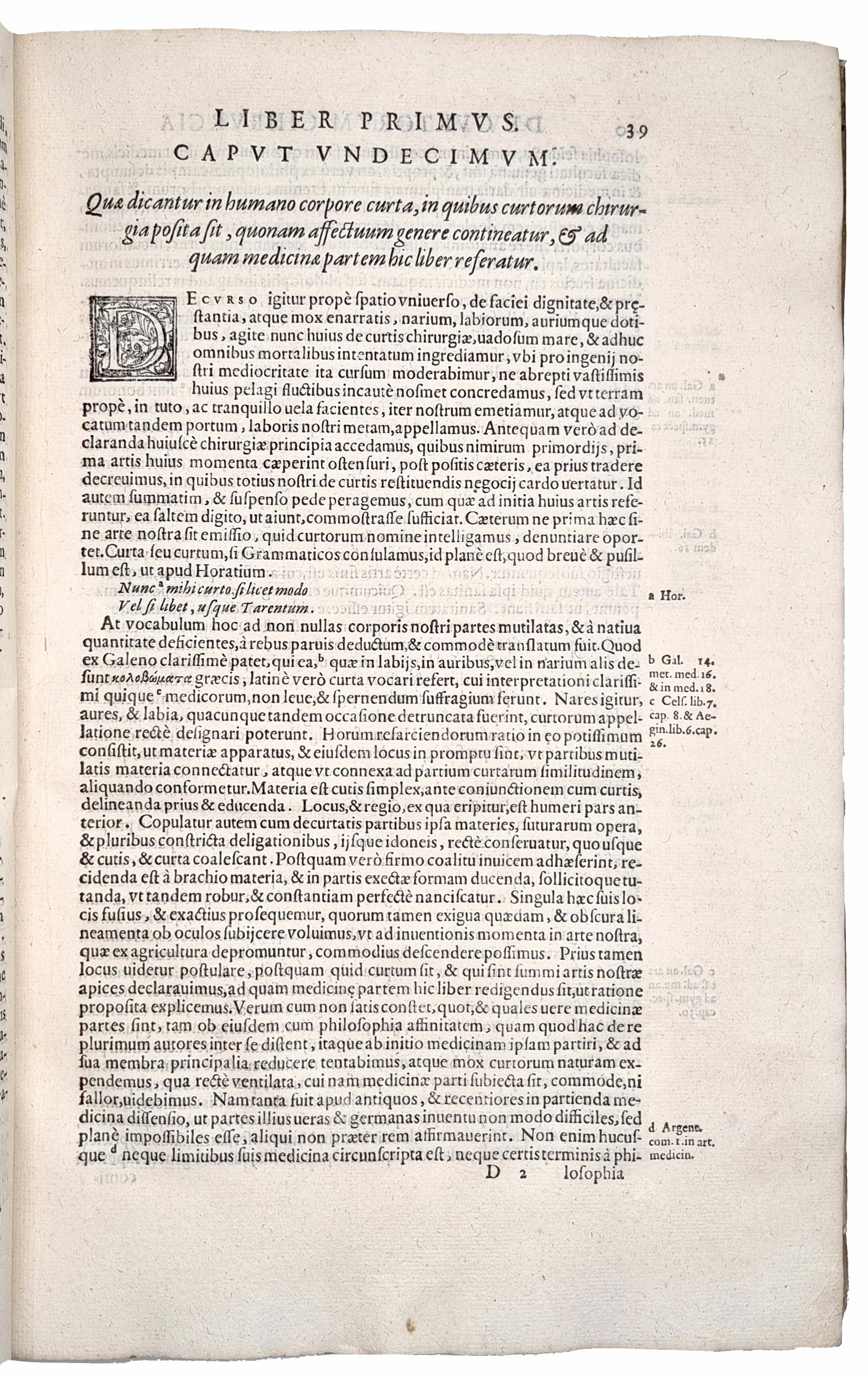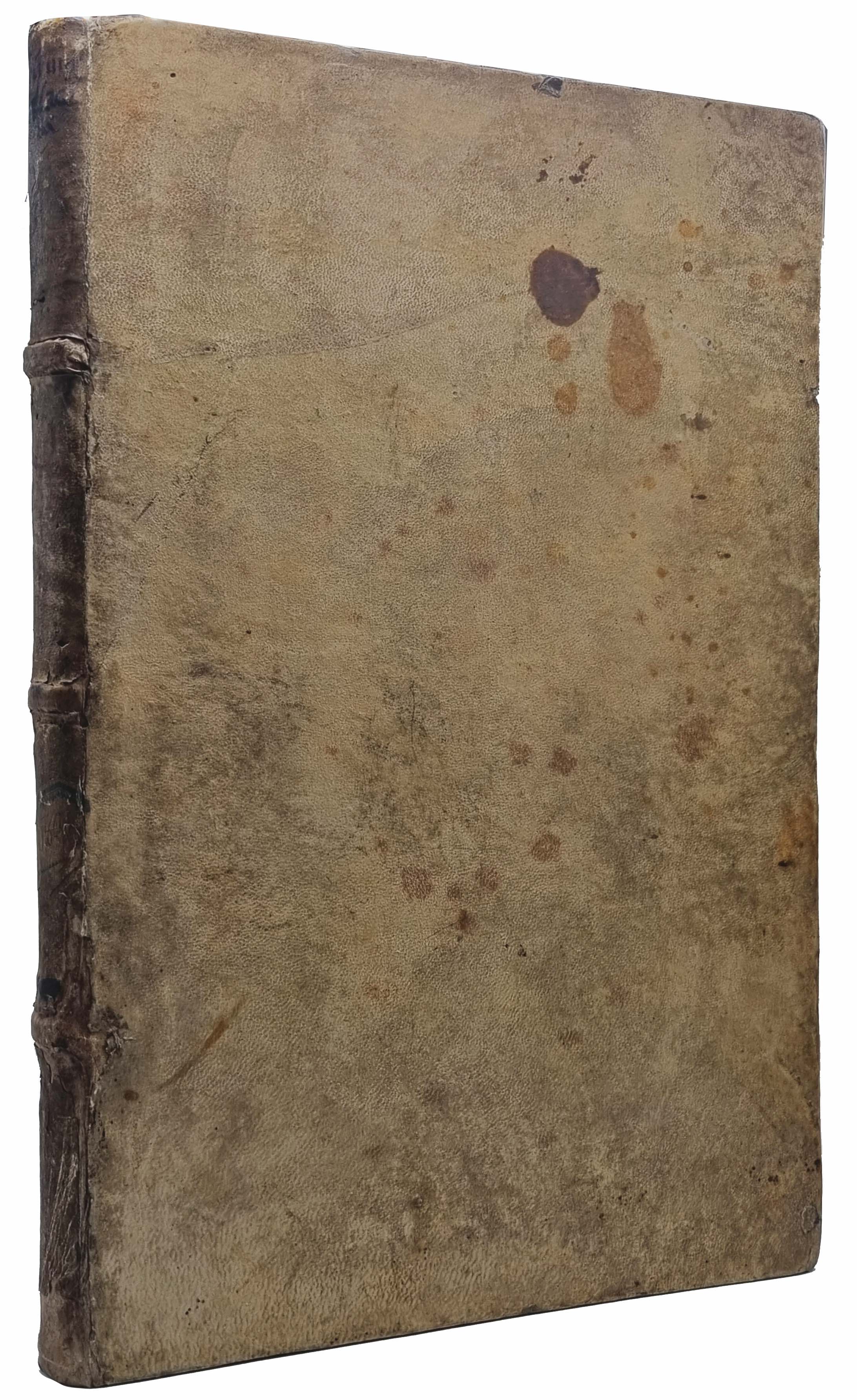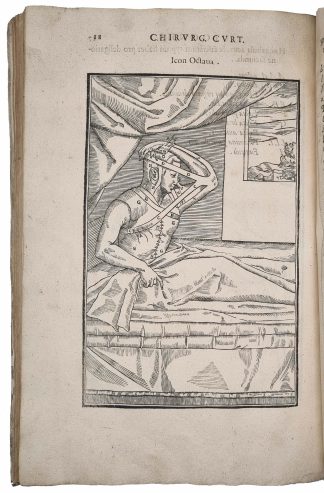TAGLIACOZZI, Gaspare
THE EARLIEST PLASTIC SURGERY
De curtorum chirurgia per insitionem
Venice, Gaspare Bindoni the younger, 1597£39,500.00
FIRST EDITION. Folio, pp. [32], 94, [2], 95, [1], 47, [33]. Roman letter, some Italic; decorated initials and tail-pieces; additional engraved architectural title (with its conjugate blank) incorporating arms of Vincenzo Gonzaga, Duke of Mantua, and standing Hippocrates and Galen; black-and-red printed title, large printer’s device on both; 22 full-page woodcut illustrations throughout, two smaller of surgical instruments and procedures on f. 257; additional title trimmed at foot and loosening in gutter, oil splash to upper corner of first three numbered pages, two leaves browned, tiny wormhole to upper gutter of last three. A good copy in contemporary plain vellum, contemporary inked title to lower edge; two minor stains and spine repairs; early ink initials ‘H.H.M.B.C.’ on both titles, contemporary ex libris on title verso ‘Jacobi Alexandri Nardi ad ipsius usu’.
Most complete issue of the first edition of this curious medical work, devoted entirely to plastic surgery and providing the first instruction for reconstructing nose, lips and ears. Gaspare Tagliacozzi (1545-1599) was a pioneering Italian physician and pupil of Girolamo Cardano, Ulisse Aldrovandi and Giulio Cesare Avanzi. Upon his graduation, he was appointed lecturer of surgery at the University of Bologna; later, he became one of the most acclaimed professors of the athenaeum, demonstrating his techniques of dissection on recently-dead bodies. A pious man, he was charged by the cardinals’ Congregation over the Index of Forbidden Books with the emendation of the works of the Lutheran botanist Leonhardt Fuchs. In Bologna, he also offered his service to the hospital of the Brotherhood of the Death; this local religious fellowship engaged with comforting the prisoners condemned to die. Through this privileged hannel, Tagliacozzi had always plenty of corpses for his anatomical and surgical studies.
De curtorum chirurgia was Tagliacozzi’s most renowned achievement. In the work, he improved and described for the first time the so-called metodo italiano, a technique of facial reconstruction via a skin graft taken from the left forearm. The well-known twenty-two plates depict surgical instruments and document every step of the process of rhinoplasty. Following the operation, the patient was immobilised in a complex vest devised by Tagliacozzi himself, waiting for the complete adherence of the graft to his nose. The process was supposed to take from two to three weeks. Tagliacozzi was aware of some aesthetic imperfection of the result, but was more concerned with the relieving benefits he wished to give to his patients’ mind and spirit. His fame as ‘the first plastic surgeon’ was so wide that several Italian noblemen sought his service. Among them, the Duke of Mantua Vincenzo Gonzaga, to whom De curtorum chirurgia is dedicated.
BM STC It., 655; Adams, T59; Durling, 4310; Heirs of Hippocrates, 236; Wellcome, 6210; Garrison & Morton, 5734; Norman, 2048; Osler, 4079.In stock


